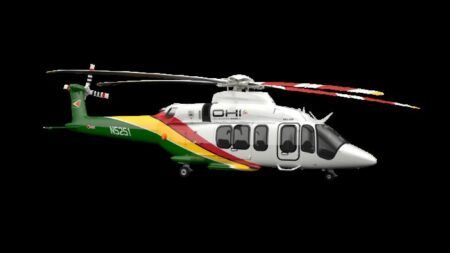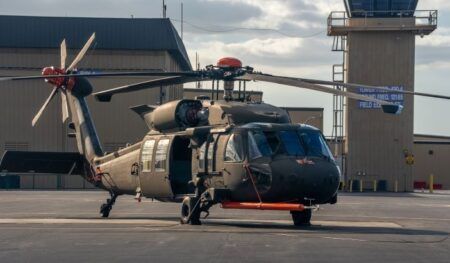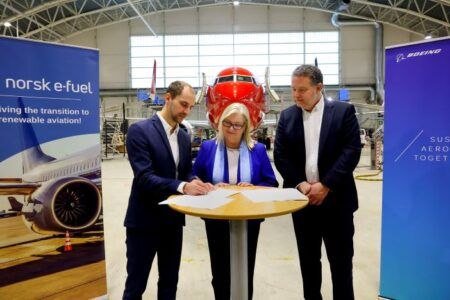Naval Air Systems Command (NAVAIR) conducted its first successful flight demonstration on July 29 of a flight-critical aircraft component built using additive manufacturing (AM).
An MV-22B Osprey completed a test flight outfitted with a titanium, 3D-printed link and fitting assembly for the engine nacelle. This part is one of four that secure a V-22’s engine nacelle to the primary wing structure and will remain on the aircraft for continued evaluation. The flight was performed using the standard V-22 flight performance envelope.
AM uses digital 3-D design data to build components in layers of metal, plastic and other materials. The metal link and fitting assembly for this test event were printed at Naval Air Warfare Center Aircraft Division in Lakehurst, New Jersey. Prior to this flight, multiple V-22 components built by Lakehurst and Penn State Applied Research Laboratory were tested at Naval Air Station Patuxent River in Maryland to validate performance.
“The flight today is a great first step toward using AM wherever and whenever we need to. It will revolutionize how we repair our aircraft and develop and field new capabilities – AM is a game changer,” said Liz McMichael, AM integrated product team lead.
“In the last 18 months, we’ve started to crack the code on using AM safely. We’ll be working with V-22 to go from this first flight demonstration to a formal configuration change to use these parts on any V-22 aircraft.”
NAVAIR has employed additive manufacturing as a prototyping tool since the early 1990s and in recent years has begun the process of printing non-flight critical parts and tools.
The demonstration is the first time a US Navy aircraft flew with an AM part deemed essential to maintaining safe flight.
Navy officials envision a future where all parts can be made on-demand globally by fleet maintainers and operators and its industry partners.
August 5, 2016




